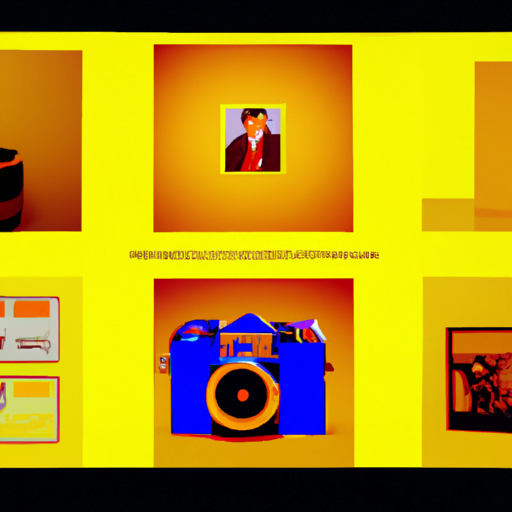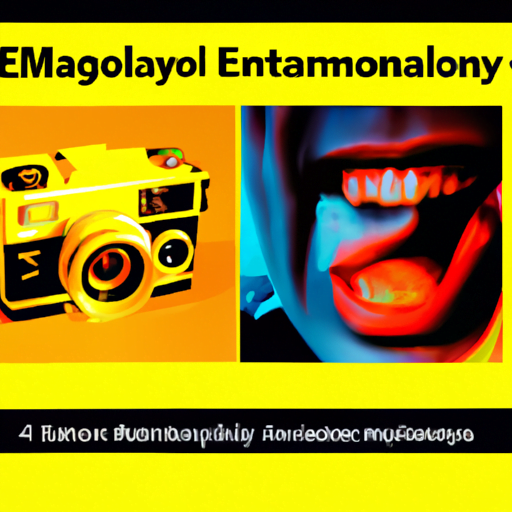
-
Table of Contents
Designing for Emotional Engagement: Creating Memorable Experiences

Design is not just about aesthetics or functionality; it is also about creating emotional connections with users. When a design evokes positive emotions, it becomes memorable and leaves a lasting impact on the user. In today’s competitive market, where products and services are constantly vying for attention, emotional engagement has become a crucial factor in creating successful designs. This article explores the importance of designing for emotional engagement and provides valuable insights on how to create memorable experiences.
The Power of Emotional Engagement
Emotions play a significant role in decision-making and memory formation. When users have positive emotional experiences with a product or service, they are more likely to form a strong bond with it. This emotional connection leads to increased brand loyalty, repeat purchases, and positive word-of-mouth recommendations. According to a study by the Journal of Consumer Research, emotionally engaged customers are also willing to pay a premium for products or services they feel connected to.
Designing for emotional engagement goes beyond simply appealing to users’ visual senses. It involves understanding their needs, desires, and aspirations and creating experiences that resonate with them on a deeper level. By tapping into users’ emotions, designers can create memorable experiences that leave a lasting impression.
Understanding User Emotions
Before designers can create emotionally engaging experiences, they need to understand the range of emotions that users may experience. Emotions can be categorized into several broad categories:
- Joy: Users experience joy when they feel happy, satisfied, or delighted. This emotion is often associated with positive experiences and can be evoked through vibrant colors, playful interactions, and unexpected surprises.
- Sadness: Sadness is associated with feelings of loss, disappointment, or longing. While it may seem counterintuitive to evoke sadness in design, it can be used to create empathy or to highlight a problem that the design aims to solve.
- Fear: Fear is a powerful emotion that can be used to grab users’ attention and create a sense of urgency. However, it should be used with caution, as excessive fear can lead to negative experiences and repel users.
- Surprise: Surprise can be a powerful tool to create memorable experiences. By introducing unexpected elements or interactions, designers can capture users’ attention and leave a lasting impression.
- Trust: Trust is crucial for building long-term relationships with users. Design elements such as clear communication, intuitive interfaces, and transparent processes can help establish trust and create positive emotional experiences.
By understanding these emotions and their impact on user behavior, designers can tailor their designs to evoke specific emotional responses.
Designing for Emotional Engagement
Creating emotionally engaging designs requires a thoughtful and strategic approach. Here are some key considerations to keep in mind:
1. User Research
Before starting the design process, it is essential to conduct user research to gain insights into users’ needs, preferences, and emotional triggers. This can be done through surveys, interviews, and usability testing. By understanding users’ emotional landscape, designers can create experiences that resonate with them.
2. Storytelling
Storytelling is a powerful tool for creating emotional connections. By weaving a narrative into the design, designers can engage users on an emotional level. This can be done through visual storytelling, interactive elements, or even through the use of microcopy. For example, Airbnb uses storytelling to create emotional connections by showcasing personal stories and experiences of hosts and guests.
3. Visual Design
Visual design plays a crucial role in evoking emotions. Colors, typography, and imagery can all contribute to the emotional impact of a design. For example, warm colors like red and orange can evoke feelings of excitement or passion, while cool colors like blue and green can create a sense of calm or trust. Typography choices can also convey different emotions, such as bold and playful fonts for a sense of energy or elegant and refined fonts for a sense of sophistication.
4. Microinteractions
Microinteractions are small, subtle interactions that occur within a design. They can be as simple as a button animation or as complex as a progress bar. These microinteractions can add a layer of delight and surprise to the user experience, creating positive emotional responses. For example, Facebook’s “like” button animation provides instant feedback and creates a sense of satisfaction for users.
5. Personalization
Personalization is a powerful way to create emotional connections with users. By tailoring the design to individual preferences or providing personalized recommendations, designers can make users feel understood and valued. For example, Amazon’s personalized product recommendations based on users’ browsing and purchase history create a sense of relevance and make the shopping experience more engaging.
Case Studies
Let’s take a look at two case studies that demonstrate the power of emotional engagement in design:
1. Apple
Apple is known for its emotionally engaging designs. From the sleek and minimalist aesthetics of its products to the intuitive user interfaces, Apple creates experiences that evoke joy and delight. The emotional connection that users feel with Apple products has contributed to its loyal customer base and brand advocacy. Apple’s design philosophy revolves around simplicity, elegance, and human-centered design, which resonates with users on an emotional level.
2. Coca-Cola
Coca-Cola is a brand that has successfully used emotional engagement in its design and marketing strategies. Through its iconic Christmas campaigns and heartwarming advertisements, Coca-Cola taps into emotions of joy, nostalgia, and togetherness. By associating its brand with positive emotions, Coca-Cola has created a strong emotional bond with its customers, making it one of the most recognizable and beloved brands in the world.
Conclusion
Designing for emotional engagement is a powerful way to create memorable experiences and build strong connections with users. By understanding users’ emotions and incorporating elements that evoke specific emotional responses, designers can create designs that leave a lasting impact. Through user research, storytelling, visual design, microinteractions, and personalization, designers can create emotionally engaging experiences that resonate with users on a deeper level. Brands like Apple and Coca-Cola have successfully leveraged emotional engagement to create loyal customer bases and establish themselves as industry leaders. By prioritizing emotional engagement in design, businesses can differentiate themselves in a crowded market and create experiences that users will remember and cherish.
